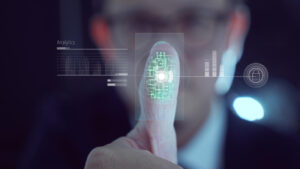Advanced biometric technology is being adopted more and more by governments to create their identity systems. Lastly, advancements in AI can provide deeper insights into the behaviours and needs of individuals stated by Bahaa Abdul Hadi. Biometric fuse is of critical importance in helping the programs dealing with biometrics achieve precise results and higher efficiency via biometric convergences. Here, we scrutinize the role of military unification of features in national emblems of inherence and look into its advantages and disadvantages.
Understanding Biometric Fusion
Biometric fusion requires combining a few biometric identifiers: fingerprints, facial identification, an iris-coded scan, and speech prints. This approach ensures that, first, the process is carried out accurately and correctly, and second, it minimizes the occurrence of wrongful accusations and innocent persons’ acquittals.
Enhanced security and accuracy
Through the mixing of several biometric features, biometric fusion is a major step in the process of designing secure identity programs for nations. Different from the usual ways of identifying, like ID cards or passwords, biometric identifiers are every person’s personal property, and they can’t be forged or stolen. Biometric fusion therefore can do an even better job of accuracy. This happens when all biometric details are being examined and identifying someone who is not the wanted person.
Improved User Experience
Biometric fusion technology helps create a more convenient and less tedious log-in process for citizens using national identity programs. Customers will not need to present multiple forms of identification. Via a single biometric profile, users can be authenticated, and this will help to decrease the length of standing in queues and waiting time.
Challenges and Considerations
Especially with the pros in balance, biometric fusion creates tremendous challenges for the identity systems of individual countries. One of the problems with biometric data is that it may lead to privacy concerns regarding the safety of the data. Governments should put in place effective data security measures to keep legitimate users away from biometric data and the privacy of this very vital information.
Furthermore, another emerging challenge is how biometric systems can communicate with one another. Distinctly separate biometric kinds may necessitate specific hardware and software, subsequently making it a problem to integrate them into one complex scheme. It is time that government expenditures be diverted to support the development of standardized protocols and technologies that will be used to interlink several biometric systems.
Conclusion
Biometric fusion occupies a key position in the confidence, correctness, and effectiveness of national identity platforms. Utilizing diverse biometric modalities, governments can build up a comprehensive identification infrastructure, simultaneously making the system secure and friendly for users. On the other hand, solving problems like privacy issues and interoperability is fundamental to successfully applying biometric merging to identity programs at the national level.
The article has been written by Bahaa Abdul Hadi and has been published by the editorial board of www.identityherald.com.




